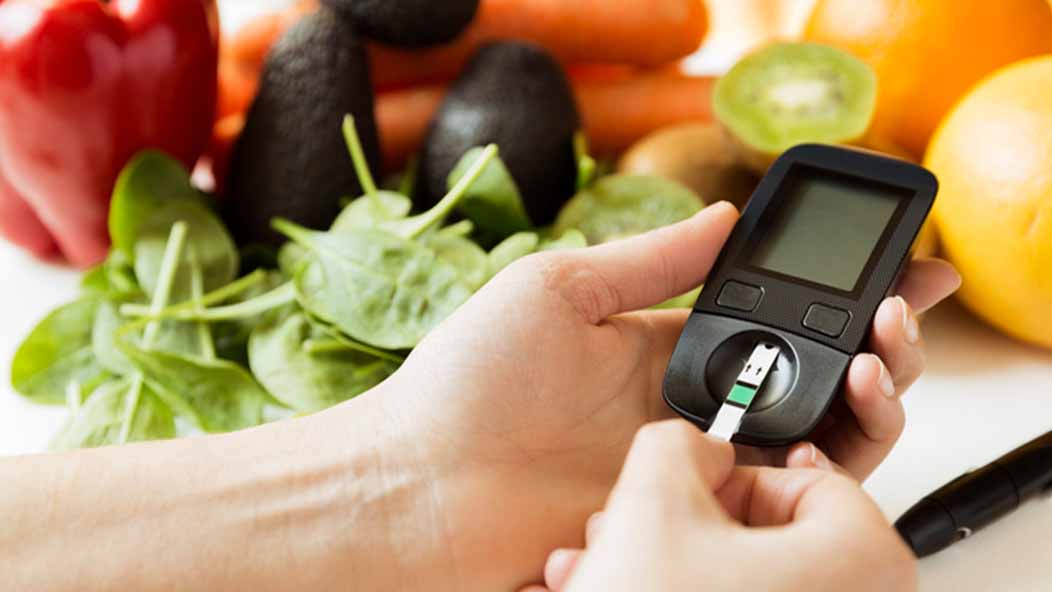Join Our eNewsletter!
Subscribe to our monthly newsletter to receive encouraging advice to help you lead a healthy lifestyle.

Dietary Guidelines for Diabetics
If you’ve been diagnosed with diabetes, there are some dietary options for you to consider. Those options use the exchange system, counting carbohydrates, and eating balanced meals by applying the plate method.
A person with Type 1 diabetes can adjust their insulin to the carbohydrate content of the meal and/or snack. This method allows for flexibility in meal planning. With the technology available today, such as pump therapy or different insulin, you can personalize your diabetes management. It’s important to learn how your body reacts to carbohydrates, exercise, and other factors such as stress.
A person with Type 2 diabetes is often dealing with insulin resistance, so the goal is to get the fat out of the muscle. The individual with Type 2 diabetes is often overweight or carries their weight in the abdomen. The focus should be on changing lifestyle, which is not always easy, but Kelsey-Seybold doctors, certified diabetes care and education specialists (CDCESs), and registered dieticians (RDs) will help you start gradually.
If you’re overweight, losing 7% – 10% of your body weight will make a difference. If you aren’t exercising or making your exercise routine more consistent, it will make a big difference in managing your condition and making you feel more in control.
Diabetes requires the person who has it to take charge. That’s why your Kelsey-Seybold diabetes care team works with you to manage your condition. The team will help you to get started and stay motivated to continue your lifestyle changes over your lifetime.
Tips for Taking Charge of Your Diabetes
Reduce your dietary fat.
The current American Diabetes Association guidelines advise that less than 7% of calories should come from saturated fat. These are the fats that raise LDL – bad – cholesterol.
Dietary cholesterol should be less than 200 mg per day. Additionally, intake of trans-unsaturated fats should be minimized. These are better known as partially hydrogenated oils. Reducing fat intake may help contribute to modest weight loss.
Limiting the fat in your diet can also help prevent a spike in blood sugar and blood pressure. An excessive amount of fat prevents insulin from working efficiently and contributes to high blood sugars.
Keep protein in a healthy range.
Shoot for a daily protein intake that’s 15% – 20% of total calories. Choices that are low in fat are recommended. A healthy portion of poultry, fish, or lean meat is about the size of the palm of your hand.
Choose lean protein foods that have no more than three grams of fat per ounce, like skinless white meat chicken or dry beans. Your entrée should consist of raw, steamed, or grilled vegetables.
Eat healthy carbohydrates.
Carbohydrates are energy source foods, which raise your blood glucose. Carbohydrate choices should come from whole grain breads or cereals, pasta, brown rice, beans, starchy vegetables, fruits, and milk products.
Learning to read labels for total carbohydrate content rather than sugar provides the best information for blood sugar control. Carbohydrates differ in their calorie content, and thus affect weight and blood glucose control.
Make smart choices about sugar.
While it is commonly believed that people with diabetes should avoid sweets, research has shown that foods that contain sugar don’t make the blood sugar rise higher than meals with equal carbohydrate levels that don't contain sugar.
But not so fast with that gooey-double-fudge chocolate cake. Consider this: just a slice of white cake with chocolate icing contains about 300 calories, 45 grams of carbs, and 12 grams of fat. That's three starch servings and more than two fat servings.
Before indulging in that guilty pleasure, ask yourself if this will fit into your meal plan, or if you will still be hungry after spending these calories. Perhaps there are other choices you could make that would satisfy your craving without the added sugar and fat.
Add high-fiber foods to your diet.
Foods like whole grain bread and cereal can help decrease cholesterol and delay the absorption of sugar into the bloodstream, which helps prevent a sharp spike in blood sugars. In fact, everyone should try to increase dietary fiber – not just people with diabetes.
It’s important to work with your diabetes care team to help you stay motivated and successfully make these lifestyle changes. Make an appointment to see a certified diabetes care and education specialist (CDCES) or registered dietitian if you haven’t already done so. Diabetes can be managed. Control the diabetes instead of letting the diabetes control you.

